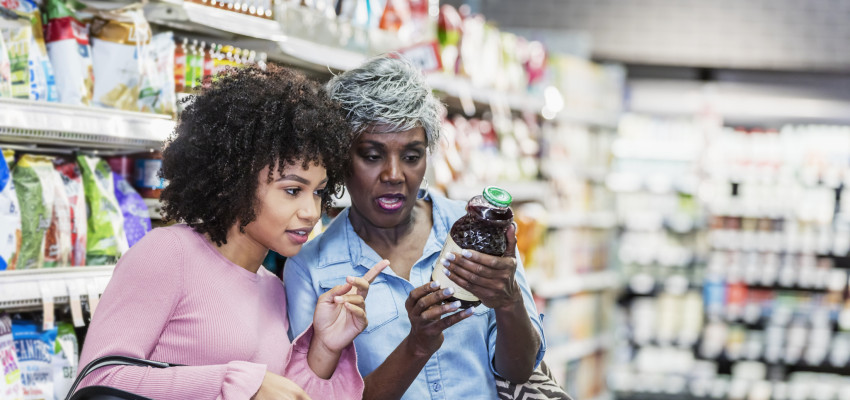By Hannah Becker on January 17, 2018
Antibiotic, GMO and Hormone Food Labels Explained
What do these labels mean and should we be avoiding food without them?

The holiday feasts are behind us. New Year’s resolutions have been made. Time to eat healthy.
But what is “healthy?”
Chances are you’ve perused the grocery aisles and felt bombarded by confusing food labels claiming things like “no antibiotics,” “hormone-free,” and “non-GMO.”
If you’re like me, sorting through the food labels can take some thought. Who wants to eat food with hormones and antibiotics in it? But, does non-labeled food really contain these contents, or is this type of food labeling just another spin on fear-based marketing tactics?
Let’s look at three common questions regarding food labels:
Does my food have antibiotics in it?
All meat marketed in the United States is antibiotic free – with or without the “antibiotic-free” label.
Farmers and ranchers are required to provide any sick animals with all the support they need to be healthy. This means in if an animal gets sick (think: farm animal version of a winter cold), farmers and ranchers may administer medicine under the direction of veterinary professionals. The only medicine allowed for animals that are used for human consumption are naturally processed out of the body in a matter of hours or days. Any remaining substance is referred to as “residue” and is tightly monitored by the federal government.
Both the U.S. Food and Drug Administration (FDA) and U.S. Department of Agriculture’s Food Safety and Inspection Service (FSIS) regulates antibiotic residue levels within potential food products, prohibiting any meat with unlawful residue levels from entering the food supply.
If you buy meat from the grocery store or restaurant, it won’t have any antibiotics in it, even if it’s not labeled as “antibiotic-free.”
Does my food have hormones in it?
It’s currently illegal for farmers to give any hormones to poultry or hogs, so there are no hormones in any of the chicken, turkey, or pork meat products you buy. Consumers can rest assured all of these food products are hormone free, even if they are not specifically labeled as such.
Growth hormones are occasionally used to increase production in beef and dairy operations. A small percentage of dairy farmers use slight amounts of the protein hormone bovine somatotropin (BST) to help increase the amount of milk the cows can produce. Good news about BST is that the American Medical Associationhas cleared this additive as safe for everyone – cows and humans – involved.
Ranchers raising cattle for beef production occasionally use approved hormone additives to help increase the amount of lean meat produced. Just like with antibiotics, the FDA monitors residue levels of hormones before meat can enter the food supply.
In case you’re still worried about hormone levels, know that one pound of beef from cattle given the common hormone estradiol contains 15,000 times less estradiol than what is naturally produced by the average man in one day.
Does my food have GMOs in it?
Most of our food (even the non-labeled stuff) is GMO-free.
There are currently only a few approved genetically modified agriculture products approved for sale in the modern food supply: alfalfa (usually fed to livestock), the Arctic apple, canola, cotton, corn, papaya, certain varieties of potatoes, soybeans, squash and sugar beets. Many of the food products lining our grocery aisles sporting GMO-free labels are misleading, as it’s illegal for these items to have GMOs in them.
Research from reputable institutions like the World Health Organization shows consumption of GMO foods is totally safe as no negative effects on human health have been correlated to consumption of genetically engineered foods.
Even if your food does have GMOs in it, it’s OK to eat.
Contrary to popular myths, GMOs do not cause cancer and they have actually saved millions of lives in nutrition deficient regions in the world.
Yes, you can buy healthy food without paying a premium for labeled products. Just because some food contains labeling that says, “no antibiotics,” “hormone-free,” and “non-GMO” doesn’t mean that non-labeled foods contain these elements. Thanks to our well-established agriculture and health government agencies, the United States has extensive regulatory processes in place to protect any harmful substances from entering our food system and finding their way onto our plates. Next time you’re cruising the grocery aisle, consider the effects of fear-based marketing on current food labeling and feel confident in your ability to make healthy food purchase decisions.





